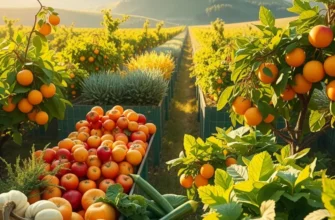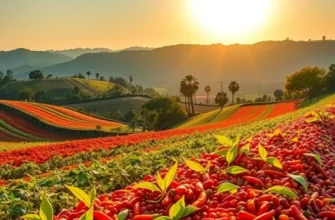Food is a vital part of any wedding celebration, representing joy, abundance, and cultural heritage. Different regions have their own culinary customs that transform meals into rituals filled with meaning. From grand banquets to intimate gatherings, wedding menus reflect the traditions of the couple’s backgrounds. This journey through global tastes and culinary traditions highlights how weddings showcase shared values, history, and exquisite flavors.
Tasting Tradition: The Role of Food in Wedding Ceremonies

Food plays an integral role in wedding ceremonies across various cultures, often symbolizing prosperity, unity, and love. In India, weddings are incomplete without a lavish spread of diverse dishes like biryani and sweets such as gulab jamun. The opulence of the menu is a reflection of gratitude and an invitation to shared abundance. Each dish symbolizes a specific blessing; for instance, sweets denote happiness and success for the couple’s future.
In Japan, the traditional nuptial ceremony features sake-sharing rituals known as san san ku do, where the bride and groom take three sips each from three cups of sake. This custom not only represents the union of two individuals but also their families, sealing the bond with harmony and good fortune. Often, a seven-course meal follows, showcasing ingredients like fresh seafood and seasonal vegetables, replete with symbolism of longevity and fertility.
Meanwhile, in Nigeria, food takes center stage during the wedding as a vibrant expression of cultural identity. Dishes such as jollof rice and pepper soup are staples, representing communal spirit and joy. The elaborate feast invites guests to indulge together, reinforcing community ties and shared happiness. Each dish is crafted with ingredients that carry traditional significance, like yams symbolizing fertility.
In Sweden, the bridal couple often partakes in a smörgåsbord, an eclectic array of items like herring, meats, and cheeses. Each meal element is meticulously chosen not only for its taste but for the cultural stories it tells—reflecting both tradition and the couple’s personal tastes. The inclusion of breads and pastries at Swedish weddings also embodies hospitality and prosperity, drawing on long-held culinary traditions.
Across cultures, these culinary rituals emphasize not only the celebratory nature of weddings but also the deep-rooted connections between food, family, and cultural identity. They underscore the belief that unity and love are best expressed through flavors and shared meals. To explore more about how global cuisines are influenced by cultural exchanges and trade, one can visit articles detailing culinary influences through trade.
The significance of food in these ceremonies extends beyond plates to become a part of the storytelling and legacy that couples begin to weave on their wedding day. Embracing these traditions, each culture’s unique dishes and practices not only enrich the palate but also deepen the sense of occasion and memory, delicately binding it to culture and narrative.
From Cakes to Candies: Sweet Symbolism Around the World

Around the globe, weddings are a tapestry of traditions, with desserts playing a delightful role in cultural storytelling. Each region boasts distinct confections, marrying flavor and folklore. Some highlight auspicious beginnings, while others promise prosperity and joy.
In Western countries, towering wedding cakes often dominate the reception. Traditionally, the British wedding cake was a dense fruitcake layered with marzipan and royal icing. Symbolizing fertility and prosperity, it was crafted to last years, allowing future anniversaries to savor the same sweetness. Today, contemporary versions embrace diverse flavors, from rich chocolate to zesty lemon.
Venturing eastward, in India, sweets known as mithai take center stage. These include delights like gulab jamun, deep-fried dough balls soaked in syrup, and jalebi, spirals of fermented flour fried and dipped in sugary liquid. Offered as blessings, these sweets highlight the sweetness of the new marital chapter.
The Chinese wedding dessert game brings us to the auspicious lotus seed paste buns. These sweets, often served at wedding banquets, signify the wish for many children and a harmonious union. The symbolism lies in the ingredients: lotus seeds and paste, both representing fertility and unity.
In the Middle East, baklava graces many wedding feasts. Its layers of phyllo pastry filled with nuts and drizzled with honey symbolize layers of joy and abundance. This dessert’s intricate structure mirrors the intricate future the couple will weave together.
Crossing over to the Caribbean, the renowned black cake—often a rum-soaked fruitcake—is a cherished wedding tradition. Infused with spices, this cake’s depth of flavor represents the rich blend of cultures, embodying unity and community.
In a quirky touch from Sweden, the kärleksmums or ‘love cakes’ offer a charming, glazed chocolate treat sprinkled with coconut. Often enjoyed at wedding receptions, these symbolize sweet togetherness and fond memories.
No discussion of sweet traditions would be complete without mention of the Korean tteok. Although rice cakes aren’t exclusively sugary, their traditional role in weddings is paramount. Ðoften gifted in ornately designed boxes, tteok symbolizes good fortune and prosperity.
Incorporating sweet symbols into weddings isn’t just about flavor; it’s a dance of culture, heritage, and hope. Each ingredient tells a story, weaving a tale of love, luck, and legacy. For those planning a wedding, mindful ingredient selection can honor and elevate these traditions. To dive deeper into the global pastry influence on weddings, explore this guide on global pastry traditions. Whether it’s cakes, candies, or rice cakes, each sweet treat offers threads that tie couples to timeless customs and aspirations.
Final words
Culinary customs play a pivotal role in weddings, where food unites cultures, celebrates heritage, and creates lasting memories. Each dish tells a story, embedding the couple’s identities within the culinary experience of their special day. By appreciating unique wedding foods, we not only indulge in exquisite flavors but also honor the traditions that connect us. Understanding these diverse practices enhances our culinary journey and enriches our taste of celebration. Next time you attend a wedding, savor each bite knowing the depth of cultural significance behind it.








